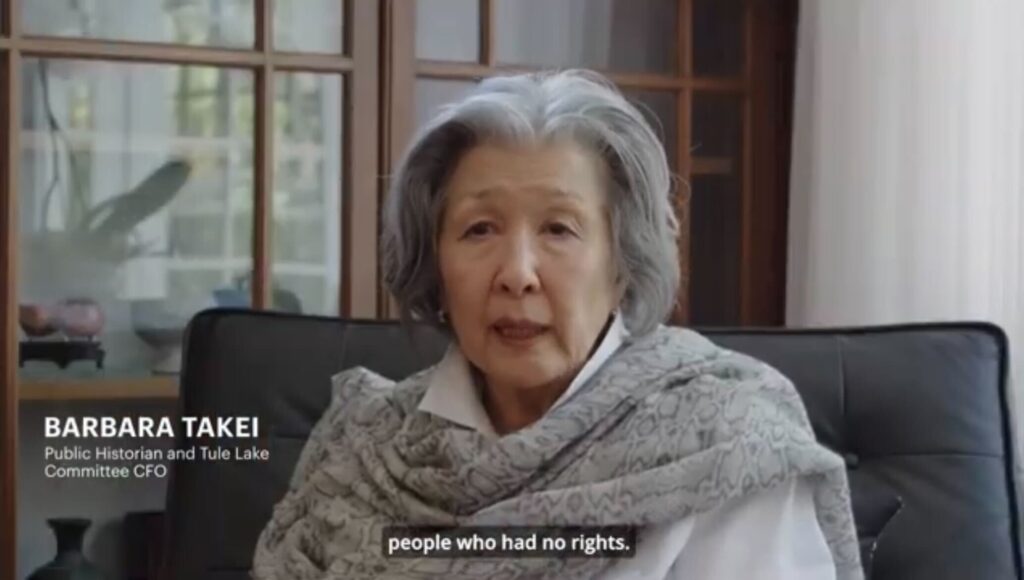Tribal elders enjoy an afternoon of games, prizes and food on the Fort Berthold Reservation

UTTC is constructing the Snow Country Prison Memorial to acknowledge the trauma caused by Japanese American internment camps. Photo credit/ Adrianna Adame
United Tribes Technical College is acknowledging its past as a WWII-era concentration camp through the creation of the Japanese American Internment Memorial Courtyard.
“This memorial, the first of its kind to acknowledge solidarity between Native and Japanese American communities, is slated to catalyze a broader reconciliation process around intersecting systems of oppression in America,” the college said.
After Japan’s attack on Pearl Harbor sparked U.S. entry into WWII in 1941, a panic regarding national security flooded the United States. In response, President Franklin D. Roosevelt issued Executive Order 9066, a law that resulted in Japanese Americans across the country being rounded up and incarcerated at internment camps beginning the following year.
One of the camps was Bismarck’s Fort Lincoln detention center, a little-known former military base. Altogether 3,850 internees of Japanese and German ancestry were incarcerated at the facility. An association of five federally recognized Northern Plains Indigenous nations repurposed it as the UTTC campus in 1969.
A Japanese American detainee, Itaru Ina, wrote a haiku there, saying, “The war is over, but I’m still in a Snow Country Prison.” Now the courtyard will be called Snow Country Prison Memorial.

“There is a parallel story of what happened to the Native people,” public historian Brian Niiya tells viewers in a video presentation of the project’s purpose. The school released the six-minute video with staff, experts and descendants of those imprisoned at Fort Lincoln to discuss the history of the grounds.
In the video Barbara Takei, a public historian and Tule Lake Committee CFO, notes, “This was the government’s way of legally treating them as if they had no rights. The Snow Country Prison Memorial is our story as well as the Native American story.”
Like American Indians, Japanese Americans experienced the ordeal of policies that caused mass separation from homes and families, plus loss of material and generational wealth, says Satsuki Ina. Born in a detention camp, Ina is a licensed psychotherapist specializing in community trauma.
Brent Kleinjan, UTTC’s College Relations director, told Buffalo’s Fire the biggest phase of the project is replacing an existing deck, which will cost around $530,000. This will include renovation, amphitheater seating and a drum circle. The next phase will provide walls made of slate roofing tiles reclaimed from the former prison’s roof. It will cost another $500,000.
In the early 2000s, Kleinjan said, a group of internee families visited the campus. Back then, he said, many of the released internees were still alive. After that, UTTC sought and received a Japanese-American Confinement Sites Grant to partially fund the memorialization of the camp’s history.
Congress established the $38 million grant program in 2006 to preserve the WWII sites. According to the National Park Service, JACS grants aim to identify, research, interpret, restore and acquire historic incarceration sites to teach future generations and demonstrate the nation’s commitment to equal justice under the law.
UTTC received its grant in 2019. One of the main goals of this project is to prevent injustices from happening again through acknowledgment, recognition and “working together to make sure history is told by the people who suffered,” Tatsuko Ina says.
Internees 17 years and older were forced to address two loyalty questionnaires for the government. They were if they would serve in the U.S. military wherever ordered. Second, they were asked if they would forswear any form of allegiance to the Japanese emperor or any other foreign power. Those with German and Italian ancestry weren’t questioned about their loyalty to the United States.
UTTC President Leander McDonald describes in the video how the government built some of the Japanese-American concentration camps on reservations. Two of the 10 camps were on the Colorado River and Gila River Indian Reservations in Arizona.
Duncan Williams, the director of the University of Southern California’s Shinso Ito Center for Japanese Religions and Culture, and UTTC staff, emphasize the importance of the healing process. The tribal college envisions the courtyard becoming a spiritual place and education tool for the community.
Preserving and creating these safe spaces also allows descendants of the internees to connect at their own pace. In addition, memorials and monuments of this type have the potential to become sites “of remembrance as well as repair,” said Williams.
Adrianna Adame
Former Indigenous Democracy Reporter
Location: Bismarck, North Dakota
See the journalist pagehttps://uttc.edu/about-uttc/visit-our-campus/snow-country-prison-memorial-at-bismarck/
https://www.nps.gov/orgs/1379/index.htm
https://www.archives.gov/milestone-documents/executive-order-9066
https://www.asianstudies.org/wp-content/uploads/the-question-of-loyalty.pdf
https://encyclopedia.densho.org/Fort_Lincoln_(Bismarck)_(detention_facility)
© Buffalo's Fire. All rights reserved.
This article is not included in our Story Share & Care selection.The content may only be reproduced with permission from the Indigenous Media Freedom Alliance. Please see our content sharing guidelines.
Youth take on coding and circuit boards at United Tribes Technical College
Dakota Access Pipeline
After some reworking, law enforcement backs newest alert system
Bolstering cultural outreach and personal development among honorees’ top goals
"Our people are worth it": NCAI panel confronts epidemic of violence, long road ahead and need for unity







